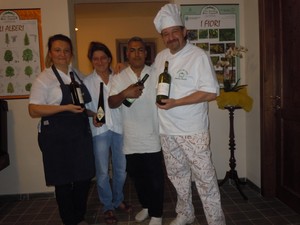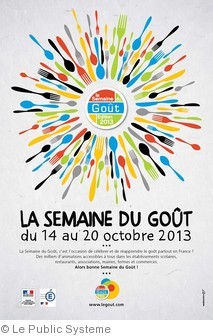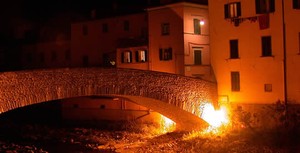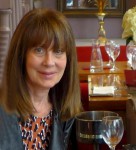Slow-Cooking in Tuscany, Les Diners Collection, La Semaine Du Gout & FIAC
- SUBSCRIBE
- ALREADY SUBSCRIBED?
BECOME A BONJOUR PARIS MEMBER
Gain full access to our collection of over 5,000 articles and bring the City of Light into your life. Just 60 USD per year.
Find out why you should become a member here.
Sign in
Fill in your credentials below.
 Chef Amedeo explains: “It was a characteristic restaurant maintaining the local traditions of an authentic country tavern, serving simple seasonal dishes such as wild boar, Zeri lamb, home made pastas, funghi, testaroli (local flat bread for the recipe and history go to this site.), and chestnut tarts, not forgetting Pecorino and Caciotta ewe’s cheese and the honey”, he recalled, with tears in his eyes. “The elegant small rooms were always full and the cellar stocked with fine wines of which my sorella Fernanda, a highly regarded sommelier, was very proud”.
Chef Amedeo explains: “It was a characteristic restaurant maintaining the local traditions of an authentic country tavern, serving simple seasonal dishes such as wild boar, Zeri lamb, home made pastas, funghi, testaroli (local flat bread for the recipe and history go to this site.), and chestnut tarts, not forgetting Pecorino and Caciotta ewe’s cheese and the honey”, he recalled, with tears in his eyes. “The elegant small rooms were always full and the cellar stocked with fine wines of which my sorella Fernanda, a highly regarded sommelier, was very proud”.
We meet one Saturday night, where the Poletti’s restaurant had been temporarily located, in the tiny medieval village of Grondola, about twenty minutes from Pontremoli. “Lunigiana, (the area where Tuscany, Liguria and Emilia Romagna regions of Italy meet) is a well kept secret”, confides Poletti. “It’s almost unknown to tourists, yet close to Florence, Pisa, Lucca and the Cinque Terre.
He’s right, it’s an unspoilt area of breathtaking natural beauty set between the Apennine mountains, the backbone of Italy, and the Mediterranean sea. A region of incredible light, of chestnut tree covered hills punctuated with medieval villages, perched high above green wooded valleys, ancient castles built by the Malaspina family (it’s also named “the hundred castles valley”) most of them crumbling edifices, ready for the likes of Four Seasons to come and transform them.
Here’s the best of Italy featuring incredible landscapes, good food and warm Italian welcomes everywhere. No Rolex required, church bells chime on the hour and half hour 24/7. The villages are Fellini films – live: communities live, argue, work, make love and die together.
Auntie Elena cooks daily for ten around her antique wooden table. The young leave to work in the real world, often making their mark, Valentino, Fabrizia, Gino, Luigi, Piero, all have tales of the city to recount over countless glasses of Chianti, seated in circles, sheltered by hazlenut trees, time stands still.
Away from the tourist trail there’s easy access to the main cultural centres of Northern Italy (Torre de Lago etc) and chic coastal villages of the Ligurian coast: Viareggio, Forte dei Marmi, Massa etc.
Look for the sign Agriturismo, that’s how I met Amedeo, Fernanda and Angela Musetti, cooking one night for the community of Grondola the tiny fragrant medieval cobblestone village which make up the 57 ‘hoods of Pontremoli (which means Trembling Bridge!).
“While the restaurant is being restored I’m a travelling cook”, he says. With Fernanda choosing the wines his menu’s based on the principals of Slow Cooking the international movement created by Carlo Petrini in 1986. Read, an alternative to fast food, the goal is to preserve traditional and regional cuisine, encourage farming, planting seeds, raising livestock characteristic of the local ecosystem.
But what does the sign Agriturismo define? Angela Musetti explains: “It’s a combination of “agriculture” and “tourism” in Italian, a style of vacationing in farm house resorts which was codified into Italian law in 1985. An agriturismo vacation is suitable for the whole family and some places are very romantic and luxurious”, she explains. Go to this website to check out Angela’s addy.
“An Italian agriturismo will usually serve food prepared from raw materials produced on their farm or at least locally. Some will allow the guest to participate in the activities surrounding the farm. Despite the rural nature of the lodging, one might expect a rustic experience; yet many agriturismi feature excellent accommodation as well as swimming pools, tennis, quad biking etc”, adds Angela.
For the dinner a notice was pinned up in the village with a message from Amedeo & Fernando inviting the community to sign their names for a tasting menu at Agriturismo di Grondola, “La Cascina di Baruccia”.
 To begin: Antipasti consisting of “Spalla cotta e coppa con cipolline nostrali in agrodolce” with glasses of white unfiltered Durella de Benelli: A little pasta to follow: Ravioli di Borragine con sugo di pomodoro e funghi porcini, paired with “il vino 8 ottobre di Ruschi-Noceti”. The main: Polpa d’agnello di Zeri al vino rosso e ginepro matched with al vino Picol Rosso Della Cantina Villa di Negro di Bagnone”. And to finish: “Bucellato della Fernanda” with the sweet Luci del Tramonto della Cantina Lorieri di Candia”.
To begin: Antipasti consisting of “Spalla cotta e coppa con cipolline nostrali in agrodolce” with glasses of white unfiltered Durella de Benelli: A little pasta to follow: Ravioli di Borragine con sugo di pomodoro e funghi porcini, paired with “il vino 8 ottobre di Ruschi-Noceti”. The main: Polpa d’agnello di Zeri al vino rosso e ginepro matched with al vino Picol Rosso Della Cantina Villa di Negro di Bagnone”. And to finish: “Bucellato della Fernanda” with the sweet Luci del Tramonto della Cantina Lorieri di Candia”.
The cost? Just 20 euros! There were seconds and thirds offered and enjoyed. Maria took the rest home for her stray cats. An evening of extraordinary conviviality and a chance to be part of la famiglia.
Agriturismo e Agricampeggio,
Azienda agricola biologica,
Angela Musetti,
Via Grondola, 54027, Pontremoli, (MS)
Ph : +39 0187 433861
Cell: +39 3342732891
Email
Sito web
And this site
Meanwhile back in Paris:
 L’hotel Fouquet’s Barrière’s Les Dîners Collection is certainly worth noting: Jean-Yves Leuranguer, chef des cuisines de l’Hôtel Fouquet’s Barrière and MOF, with Christophe Schmitt, chef du restaurant Le Diane, invite talented and starred chefs to cook/create alongside them. Les desserts are by Claude Ducrozet, chef pâtissier of l’Hôtel Fouquet’s Barrière.
L’hotel Fouquet’s Barrière’s Les Dîners Collection is certainly worth noting: Jean-Yves Leuranguer, chef des cuisines de l’Hôtel Fouquet’s Barrière and MOF, with Christophe Schmitt, chef du restaurant Le Diane, invite talented and starred chefs to cook/create alongside them. Les desserts are by Claude Ducrozet, chef pâtissier of l’Hôtel Fouquet’s Barrière.
Wednesday 16th Octobre 2013 : Maison de Caviar Petrossian
Wednesday 13th novembre 2013 : Jun Yukimura, chef Restaurant Azabu Yukimura (Tokyo, 3 étoiles Michelin)
Wednesday 4th December 2013 : Maison de Champagne Perrier-Jouët
Tuesday 21st January 2014 : Enrico Crippa (Piazza Duomo, 3 étoiles Michelin, Alba Italie)
Friday 14th February 2014 : Philippe Urraca, MOF (Meilleur Ouvrier de France) Chocolatier
Wednesday 12th March 2014 : Maison Alain Milliat
Average Spend 200€ including wines
Hôtel Fouquet’s Barrière
46 avenue George V, 8th
Metro: George V
Tél. : 01 40 69 60 60
And, FIAC (Foire Internationale d’Art Contemporain) runs all over Paris October 24-27
La Semaine du Goùt:
 Calling all foodies from 14-20th October! Exciting culinary events orchestrated by top talents including Michel Roth, Gérard Cagna, Yannick Alléno, Yves Camdeborde, Christian Constant, Jean-Yves Leuranguer, Jean Imbert, Yves-Marie Le Bourdonnec, Joaquim Braz, Frédéric Kaiser, Eric Rousseau, Denis Férault, François Lachaux, Patrick Henriroux, Steve Kaplan etc. …
Calling all foodies from 14-20th October! Exciting culinary events orchestrated by top talents including Michel Roth, Gérard Cagna, Yannick Alléno, Yves Camdeborde, Christian Constant, Jean-Yves Leuranguer, Jean Imbert, Yves-Marie Le Bourdonnec, Joaquim Braz, Frédéric Kaiser, Eric Rousseau, Denis Férault, François Lachaux, Patrick Henriroux, Steve Kaplan etc. …
More in FIAC, Italy, Paris restaurants, restaurant, Restaurant reviews, Tuscany




